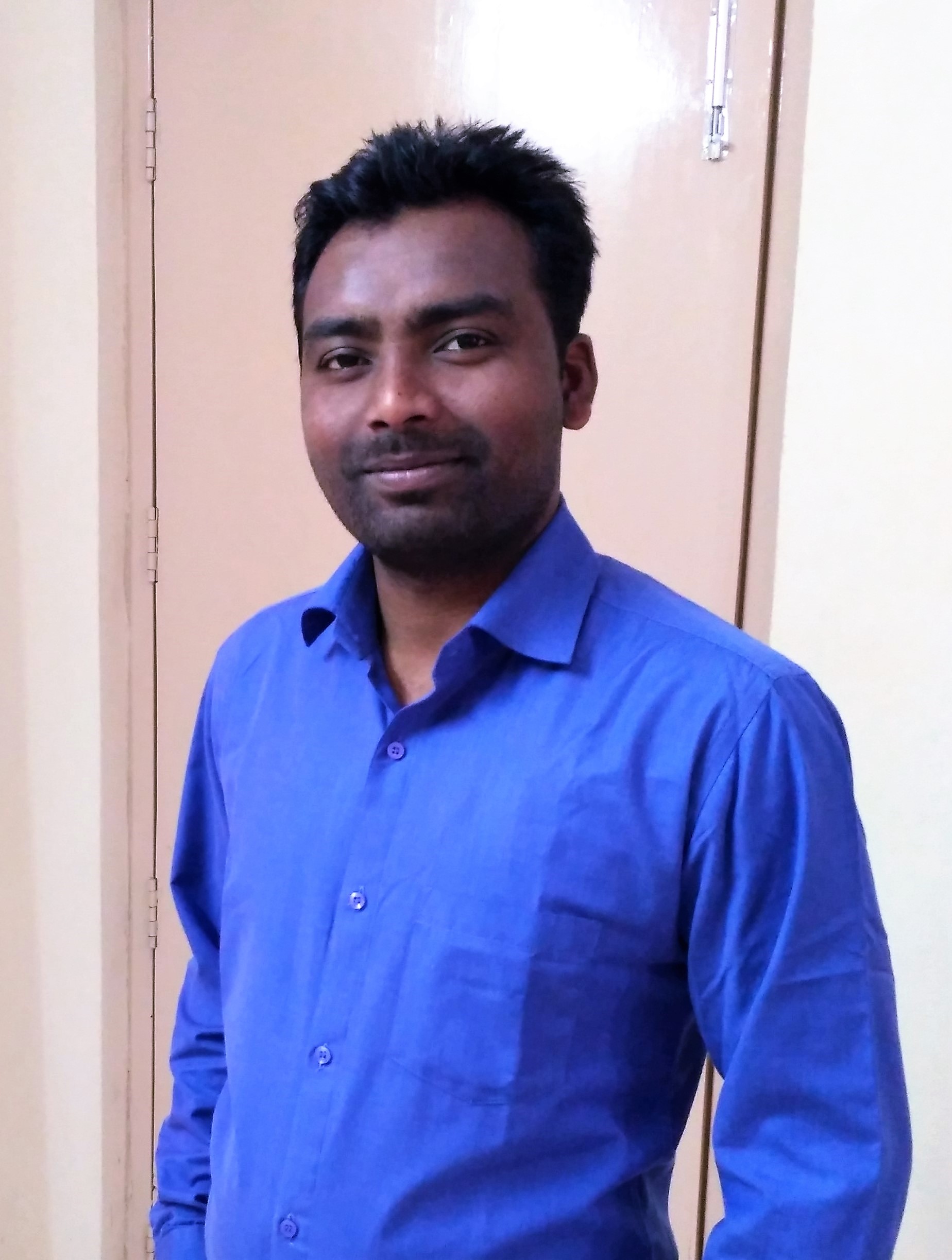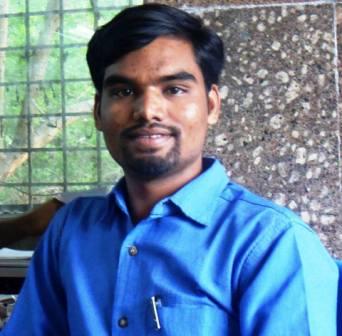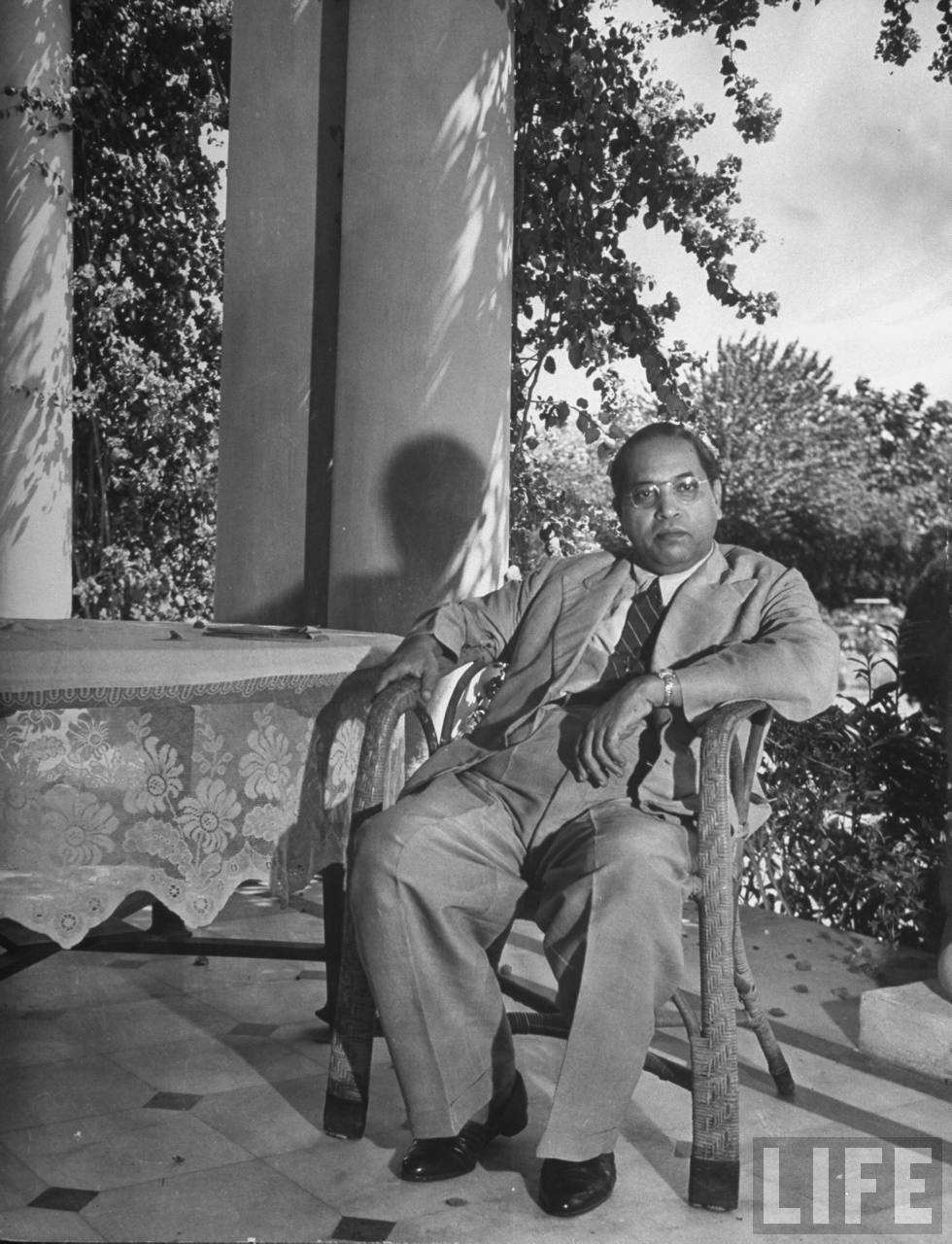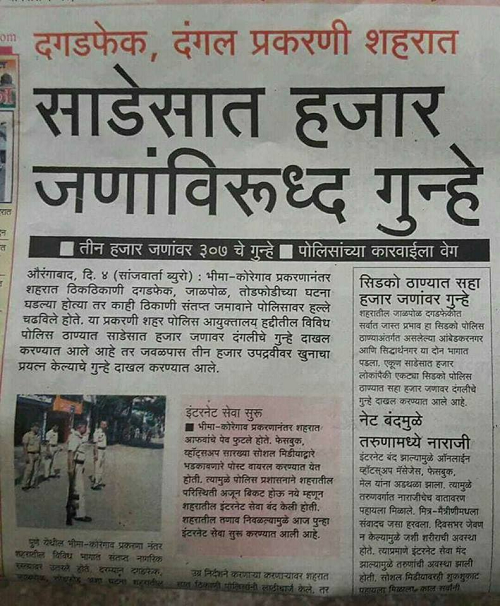Bansidhar Deep
 “When equality is denied everything is denied. There is no equality in M.Phil/Ph.D admission, there is no equality in viva-voce, there is only denial of equality, denying prof. SukhadeoThorat recommendation, denying students protest places in Ad-block, denying the education of the marginals.”~ Muthukrishnan’s (Rajni Krish) last FB post.
“When equality is denied everything is denied. There is no equality in M.Phil/Ph.D admission, there is no equality in viva-voce, there is only denial of equality, denying prof. SukhadeoThorat recommendation, denying students protest places in Ad-block, denying the education of the marginals.”~ Muthukrishnan’s (Rajni Krish) last FB post.
Caste system in India is one of the curses for Dalit and other marginalised groups or communities. After the death of Ashoka the great, socio-political conditions of non-marginalised communities gradually became marginalised and the Brahminical domination started over them. And that was the period of Buddhism’s decline in India. To dominate the egalitarian people, the Brahmins established two anti-social institutions: Caste and Patriarchy. Therefore, without the background of these institutions we would not be able to understand anything about Indian society and the polity of this country. Within the scope of this paradigm the whole situation of the lower castes became worse in terms of their education, social position, economic condition, political participation and decision making within their community and outside of it. These conditions continue till today with slight changes. But fortunately, the modern liberal education introduced by British, makes Dalits conscious for their rights and dignity, to some extent.
In modern times Rashtrapita Jyotiba Phule (the father of education), Sabitribai Phule ( the Mother of education), Birsa Munda (Hero of Tribals/Adivasis), Sahuji Maharaj (the father of reservation) and Dr. B. R. Ambedkar (messiah of all oppressed) and many others emerged as the voices for the historically marginalized and oppressed communities. They tried to understand the causes for why these communities became deprived in this country, and why they do not have equal space for education? Ultimately, they recognized that “Brahmanism” is the ultimate cause for it. Therefore, they started questioning the system in general and their values in particular. And they started talking about a democratic system based on liberty, equality, fraternity and justice for all. At the end, the marginalised of this country were able to get some education, employment and political participation.
But that was not the end of the game. The situation of marginalized communities is not so good even today. They are continuously attacked, harassed, humiliated, discriminated, and exploited by the upper castes of this country. It is not only in one aspect of their life but in all aspects. Their houses are burnt every day, Dalit women are paraded naked in the streets and young girls are being raped. The SC/ST/OBC and religious minorities students are socially boycotted, suspended1, discriminated, abused in the higher educational institutions. This is happening in almost every institution of this country. And because of this institutional discrimination over marginalised students they are forced to commit suicide such as Rohith Vemula from UoH to Muthukrishnan from JNU, and many others.
There are lots of issues to explore about these communities but here I want to explore some of the issues regarding how and why marginalized students are discriminated in the higher educational institutions like Jawaharlal Nehru University, Delhi University, All India Institute of Medical Sciences (AIIMS) and Indian Institute of Technology in terms of caste, reservation, gender, hostel, scholarship etc. Recently UGC imposed a new rule namely UGC regulations, May 5, 2016, where written exams for M.Phil/Ph.D entrance will be only for qualifying but 100 per cent viva voce will be the ultimate test. And for appearing in viva voce one has to clear a qualifying exam before. This resolution is anti-reservation, anti-SC/ST/OBC and religious minorities. Now this would be another dark chapter in the history of India.
According to Louis Althusser, if you control the state apparatus then it is easy to rule people. These apparatuses are judiciary, executive, legislature, defence, universities, media and so on. The current regime is desperate to utilize the educational apparatus which is one of the strong apparatuses to rule and manipulate public opinion. Now BJP and other right wing forces are trying to control all these apparatus and trying to un-present the marginalised students in these institutions.
Reservation is for Equality and Justice
First of all, I would like to deal with reservation and discrimination. Reservation for Scheduled Castes, Scheduled Tribes and Other Backward Castes are justified because they are discriminated or deprived historically. To understand reservation one must understand that why were they introduced in India? Second, what is the importance of reservations in a democratic society? Third, why marginalised students are facing discrimination just because they are coming to higher education through reservation?
No doubt, because of reservation or affirmative policy, the Dalit-Adivasi or lower caste students are entering higher educational institutions and governmental institutions. This is the case only after Poona Pact in 1932. The Dalit and Adivasi got some share in the education and governmental institutions. So that was the paradigm shift for the Dalit world and their lives in the era of modernity. One must understand the intention of those who brought this policy into existence. It was obviously to represent their community and secure their place for their own destiny. But unfortunately people are making sense of it otherwise. It is also a fact that because of these provisions they got education and to an extent were able to come in the executive and other institutions. To an extent they understood the fact and reality about the Indian society and Brahmanism. This is the cause (becoming conscious) why today all marginalized community students2 are facing discrimination in the higher institutions and their quotas are not filled. This remains the case for students, teachers3 and staff.
The debate of reservation is an on-going one. Many people misunderstand the importance of reservations, a few Dalit-Bahujan students too. The upper caste students and faculty are mostly agitating against reservation. They will not stop it. So all marginalised students must understand its importance and represent their voice separately. Reservation is a democratic principle. It is for bringing change in the social compositions and ending social exclusion and discrimination or humiliation rather than strengthening inequality. Therefore, the main aim of reservation is to bring Dalit, Adivasi and other marginalized communities into the mainstream of the society. In other words, it stands for the principle of equality. Due to the over-representation/monopoly of upper caste or class some sections of the people are historically always under-represented and deprived. So reservation is to fill this gap between over-representation and under-representation.
Multiple Discriminations faced by Marginalised Students
The division in education in terms of male/female, boys/girls, urban/rural, Dalit/non-Dalit, private/public, science/ humanities, technical/non-technical and English medium/non English medium are the issues which must be understood. Nowadays, most of the marginalized students are coming to pursue social sciences. In this context one can ask why those students are largely coming to study social sciences and why not technical subjects like physics, chemistry, computer science, biotechnology, medical sciences, engineering and so on? It is evident that these students are coming from poor backgrounds they do not have reservation or opportunities to enter other subjects. Even when they have reservation they are not allowed into those streams. Nowadays, one can see how education has been privatized and commercialized leading also to further exclusion.
Why do some particular students belonging to well-off families go for English medium schools or convents and why not another section of poor students? And this is the case for women too. In Indian society, women are historically excluded from all democratic and human rights. They did not have the right to study, right to decision making, being part of other public institutions, much like “Sudras”and “Ati-Sudras”. This is the case for women in general but think about the Dalit women, their conditions and position in the society. Their status is much worse in terms of education and participation in different institutions in the Indian society. There is reservation for women, but it is important to ask how many per-cent of Dalit female students are getting this opportunity and coming up for higher educational institutions?
I know and everybody might have known that today’s education has been divided in terms of private and public education. It is not only in educational institutions but in other fields too. Why it is that the case one must understand. I would say because of public institutions the Dalit or lower caste students are entering higher institutions and they are bound to enter them legally as part of their democratic rights. But Dalits do not have a place in private institutions which have become sacred spaces like “Gurukuls” or “Agraharas” for upper castes and well off students. Because they know Dalit students will not be able to enter into private institutions, that is why for “Dvija (twice-born)” caste Hindus, universal education is far from their ideology and philosophy. Thus, they are anti-mass education. And today in the era of globalisation, privatization and liberalization it clearly manifests in different forms.
I would like to talk about some instances to show that how discrimination is faced by lower castes students. Last time I appeared for the NET exam, and the next day one of my upper-caste classmates met me and asked how was my exam? Then I replied, it was good may be I will clear net but not JRF (Junior Research Fellowship). Thereafter, he said to me that yeah it’s ok, even if you are not getting JRF, you will get RGNF (Rajiv Gandhi National fellowship) as usual.
After my M.Phil admission in JNU another classmate told me that “Reservation tumko bacha liya (category/reservation saved you)”. These are the experiences how upper castes discriminate against a Dalit in terms of reservation and quota. In fact, it is not just “discrimination” but “humiliation” and looking at someone as “inferior”. Because they think Dalit student do not have merit or efficiency. But that is not the case in reality. For example, in The Death of Merit4, a documentary which recorded the cases of some meritorious students who were discriminated and excluded only because they were Dalit. And due to the institutional discrimination they were forced to commit suicide. Also, there are statistics which show that sometimes Dalit students perform better than non-Dalit students.
These days, in higher educational institutions, the admission of marginalised students is not encouraged. And this has been the case historically. Therefore, a number of seats are vacant which is exlpained away with strange logic that Dalits do not have capacity to qualify or touch the qualifying percentage or candidates are not found suitable. For example, in JNU till the Ambedkarite political forces emerged in the campus the reservation was not implemented in the direct Ph.D admission. In this way in JNU, SC/ST/OBC and minorities quotas were not filled. This is the case for both students and faculty. This in a university known for left politics and progressive colours. The discrimination in viva-voce is one of the discriminations which happen due to caste where less marks are given to Dalit students than the upper castes.
It has also been proven by the Abdul Nafey Committee at JNU. The proposals of Dalit students are ignored, thrown out on the table in front of everybody and laughed at because a Dalit student wants to do research on Ambedkar, caste, gender and other relevant issues. Take for example, one of my friends who had come from Hyderabad Central university to give an interview in Delhi University he was forced to do research on psychology of “Mahabharata” and “Ramayana”. Eventually, he left the programme. Another example is that in Delhi University lots of SC/ST/OBC seats are not filled. In recent past there was a protest for this, for why the SC/ST/OBC quotas or reservations are not filled. This is the case also in AIIMS, IIT, IIM and in every higher educational institution.
Anyone who has studied in Indian higher institutions can narrate well about the culture of those universities. Because of this undemocratic culture SC/ST/OBC students are made to face discrimination or humiliation and so on. One thing is clear that the culture of English language is very difficult to speak and articulate for a first generation village background Dalit student. Therefore, they don’t get good grades because of this language barrier. Then ultimately these students get frustrated and leave the university. There is no teacher students relationship especially between Dalit students and upper caste teachers/professors. We know that in higher educational institutions and offices Dalit faculty and staff are very few than upper castes. Wherever you go you will get an upper caste professor and teacher. Most of the upper-caste professors never encourage or give guidance to a Dalit student so that he/she will cope with the situations or conditions. Ultimately the Dalit students are ignored.
Although the Prohibition of Unfair Practices in Technical Educational Institutions, Medical Educational Institutions and Universities Bill 2010, which was introduced in Parliament recently, acknowledges the widespread prevalence of malpractices in our institutions of higher education, it is inadequate for tackling the host of corrupt and unfair practices. The discriminations are at many levels such as discrimination in terms of reservations, caste, race, gender biases, accommodation, guide allotment, topic selection, syllabus and curriculum and fellowship and so on. Most of the students come from the landless and BPL (below poverty line) family background who do not have enough money to manage themselves as well as the other activities related to education, among other things. The metropolitan culture is very expensive, to stay outside and manage. If a Dalit-Adivasi5 or any other marginalized student will not get fellowships in time they will not be able to survive in the campus and continue his/her studies or research. Due to financial problems Dalit students do not get photocopies of books, articles and study material so they get fewer grades in class. These days hostels are not available, so SC/ST and other oppressed students are facing lots of problems and they don’t have money to hire a room outside the campus and attend class and university activities. SC/ST and other backward students are not coming from technological background. They don’t know how to operate it and do research by using it and do the work technically therefore they aren’t able to summit their assignment in time and properly. As a result they get very less grades. On the other hand, downloading e-materials like e-book, e-articles and journals are essential and compulsory part of research and today’s education.
Due to the fee hike in admissions6, mess bill, hostel fees in the educational institutions, students form marginalized background are not able to get admissions and cope up in the university. The literature being taught in the class room is not the history or literature of all but only some selective literatures and history. That’s why the debate of NCERT text and rewriting history is now the agenda of BJP and RSS. The upper caste elite culture is also a big problem for the SC/ST/OBC and other oppressed students to survive. A report in the Indian express (Sep. 2006) said that the majority of students at AIIMS in New Delhi live in clusters in the college hostel as that is the only way to live safe and comfortable. The authorities give two different versions to explain this state of affairs: students change their room because of maintenance problems and Dalit students prefer to live along side their friends and they feel comfortable in their groups. This ‘Dalit ghetto’ is not something created by Dalit students themselves but because of brahminical casteist academic culture they are segregated. Because of this particular fact the government of India appointed a committee headed by UGC chairman Sukhadeo Thorat to investigate these complaints.
These facts show that all the faculty and non-Dalit students are anti- reservationist and anti-Dalit. In these universities and institutions, you hardly get Dalit or SC/ST faculties who could give support to these Dalit students. Even in the placements, these students are not recruited for multinationals and good enterprises and paid low salaries. Therefore, caste prejudices in these premier institutions is common against Dalits.
The higher dropout rates at IITs, IIMs, AIIMS, JNU and other higher educational institutions are not because SC/ST/OBCs are not performing well in their respective subjects but due to the brahminical academic cultural environment that these universities or institutions have inculcated. Dalit or lower caste students drop out because of the casteist treatment by the upper caste professors and teachers. Their mind set is full of biases and prejudices. These kinds of activities kill the spirit and the motivation of a Dalit student to do hard work and cope with the situation. These days there is racial discrimination in the Indian campuses. The best example for it is the “Racist Dossier” in JNU. The dossier also has discriminatory and demeaning allegations against the North-eastern, Muslim, Adivasi, Dalits, female students.
One thing should not be forgotten that unless caste is annihilated in the society the reservations will continue. Even if it is not the ultimate end it is required for social justice. The total population of scheduled caste and scheduled tribes is roughly 16 per cent and 8 per cent respectively. But their representations in higher institutions are lower than their respective proportion in the national population. According to data, SC is 8 per cent and ST is 3 per cent. This is the data which shows SC/ST quotas are not filled according to their proportions and reservation for OBCs faculty is yet to be properly implemented. This is the case for all marginalised in India. But on the other hand, the upper caste population is hardly 15 per cent and their percentage in higher education is more than 50 per cent both as students, faculty and staff. Why? Ultimately, the educational rights have to be fought back and for that all the marginalized students must be united.
~
Notes
1. In so-called progressive university like JNU, recently, nine students were suspended and they are all from marginalized backgrounds. And these days, all the marginalized students are getting targeted through notifications, so-called notices, fake charges etc.
2. Almost all marginalised community students are discriminated in higher educational institutions. For instance: in January 2016, Rohith Vemula’s institutional murder at HCU; the enforced missing/kidnapping of Najeeb Ahmed at JNU and recent suspension of over nine students and harassment of other marginalized students who are continuously getting notification, and charges from administration.
3. When Rohith was murdered in UoH, some of the teachers from Dalit community stood in support of the suspended students, therefore the teachers were also suspended and had to face discrimination. In JNU, after the suspension of nine students some of the teachers come out in support of them. Then they also faced so-called notices and enquiry by the institution.
4. In this documentary, it has been documented how Dalits students are excluded not because they don’t have merit but the upper-caste teachers discriminate against them because they are from a particular community—Dalit. Some of the students who committed suicide are: Bal Mukund Bharti, Jaspreet Singh, Senthil Kumar, Pushpanjali Poorty, S. Amravathi, D Syam Kumar, Bandi Anusha, Sushil Kumar Chaudhary, JK Ramesh, Madhuri Sale and others.
5. Recently, the national scholarship scheme for STs, called RGNF, has been stopped by the government.
6. In private institutions the fee hike is obvious, but nowadays, some of the public universities are also under attack. For example, JNU where the admission fees for marginalized students has now been increased. The only reason for doing all is to stop lower caste/class students from coming into the universities.
~~~
Bansidhar Deep is a Research Scholar at Centre for Philosophy, Jawaharlal Nehru University, (JNU), New Delhi. His area of interest includes Lived Experience, phenomenology, hermeneutics, socio-political philosophy, feminist philosophy, Ambedkar. He is currently researching on “Theory of Lived Experience: the Idea of Historicity and Social in Wilhelm Dilthey and Alfred Schutz”.










